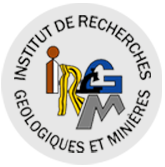Linking crop structure, throughfall, soil surface conditions, runoff and soil detachment: 10 land uses analyzed in Northern Laos
In montane Southeast Asia, deforestation and unsuitable combinations of crops and agricultural practices degrade soils at an unprecedented rate. Typically, smallholder farmers gain income from “available” land by replacing fallow or secondary forest by perennial crops. The aim of this study (M-TROPICS/MSEC) was to understand how these practices increase or reduce soil erosion.
The paper was published in October 2017 in Science of the Total Environment and it is available here.

















